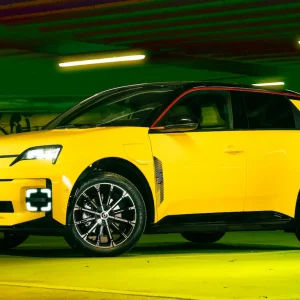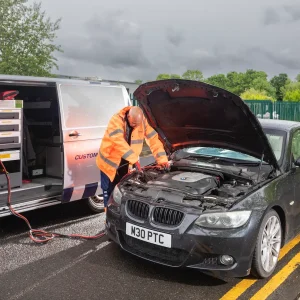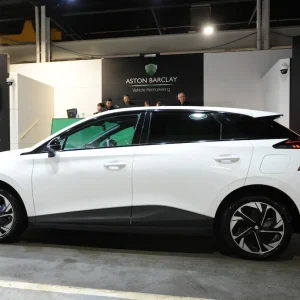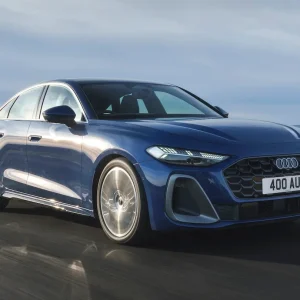Specification should be a pretty straightforward thing. You’ve picked your car, you know what the driver needs and you don’t want to go overboard with the toys.
The amount of trim levels, packs and individual options is such that it’s not unheard of for vehicle manufacturers to be confused by their own options lists. That leaves the fleet operator with a Herculean task of sifting through a mountain of trim levels and options to try and find the ones that best suit their drivers and will give them a decent return when the car is sold on.
The rule of thumb, so the remarketing industry says, is to spec a car according to its segment. Loading up a city car with heaps of equipment is unlikely to give you any sort of decent return, but the same kit, depending on what it is, would be expected of an executive saloon.
Simon Henstock, BCA’s operations director, explains: “If you have premium models on the fleet then they should have a good level of specification – attractive paint and trim, leather interior, alloys, all the expected bells and whistles – because low-spec premium cars can be difficult to remarket. The used buyer expects to see a decent specification on these models.
“With this in mind, user-chooser fleets should beware of badge snobbery amongst their drivers,” he adds, warning that overzealous drivers can hinder residual values by stretching the limits of their choice list to poorly specced entry-level models. “An allowance [can be] stretched to breaking point just to get the ‘right’ badge on the bonnet at the expense of spec and trim.”
“Don’t over-specify a small car as you will never get your money back,” adds Alex Wright, managing director of Shoreham Vehicle Auctions. He says it’s also worth keeping an eye on the equipment leasing companies push or throw in for free because it’s generally the kind of thing that will boost your residual values.
“Look at what contract hire companies often give away for free, or incentivise fleets to help improve their residuals – metallic paint and auto gearboxes wherever possible on large, executive saloons.”
Metallic paint is recognised as the most essential cost option in order to generate interest from used buyers. Autorola sales director Jon Mitchell describes it as “a great starting point”.
Henstock says that over and above more advanced options, the paintwork is one of the fundamental basics that needs to be right for the model if it is to make decent money when it’s sold on: “Increasingly, such extras as smartphone connectivity and parking aids are expected on younger used cars, as well as multifunctional dashboard computers that monitor everything from your mpg to recommending the gear you should be in, rain-sensitive windscreens and light-sensitive headlights. However, while these make the car more desirable, any added value is fairly negligible compared to the importance of presentation and a good colour, for example.”
Wright thinks satnav is worth having “especially on the larger cars and SUVs”, and Mitchell agrees, but Henstock doesn’t see as much worth in it any more: “Factory-fitted satnav was a big incentive a few years back, but less so nowadays because most smartphones have perfectly serviceable navigation apps that can be downloaded for free and activated via a hands-free set.”
He continues: “DAB is an interesting upgrade in that it is desirable at the minute and will become close to essential when the analogue radio signal is turned off sometimes towards the end of this decade. The bar is always rising for in-car entertainment, and used car buyers’ expectations are equally high.”
Another guideline is to steer clear of individual items of equipment whenever possible and stick with the manufacturer’s specification packs.
“Anything offered by manufacturers as a package is more likely to see a return as it appears on the original vehicle spec,” says Wright. “Individual options can be missed on a car at sale time, especially the ones you can’t see, such as Bluetooth or a tracker.”
Top-end trims can be perceived as the ones to avoid in terms of a return on investment, but that’s limited to smaller cars according to Mitchell: “[They] are generally worth more in the larger more expensive executive cars or 4x4s, but not the smaller superminis.
“Cars with a sporty badge such as GT, GTI, SRi, FR etc. are generally worth the investment as a used buyer will be happy to spend the extra money when it is three or four years old as it is seen as more of a sporty-performing and handling model.”
“Don’t bother with top-end specs until you get to the likes of a BMW 5-series or Mercedes E-class,” counters Wright, “then specs like M-sport and AMG come into their own with used buyers looking for these types of packages that set their car apart from others.
“It’s also worth looking at the bottom-end spec – but don’t go for an entry-level executive car or 4×4 as it simply won’t cut the mustard in a physical auction at three or four years of age.”
As for equipment that is likely to prove fruitful in future, Henstock reckons modern connectivity and safety features will perform well: “Going forwards, connectivity, data and safety are likely to be critical, giving drivers live information about their journey so blockages and accidents can be avoided, for example, as are an increasing number of driving aids from parking to auto-stopping to avoid accidents.”
The residual value expert’s view
Rupert Pontin, chief car editor at Glass’s, says the best way to view specification is with an eye for popular models in a range that will catch the attention of retail buyers when the cars are sold on: “From new it is important to ensure that the best model within the range is selected. For example, in the Audi range this would be the S-line as this is most popular in the retail market and therefore the trade.”
Director of valuations and analysis Richard Parkin adds that it’s worth bearing in mind the sort of equipment that will be desirable in future around the time the vehicle is sold: “You need to think about what might be popular in three years’ time (if that corresponds to the defleet) so DAB will be conspicuous by its absence (and negatively impact RVs) as the UK intends to switch off analogue radio in the medium-term future.
“Likewise, Bluetooth connectivity is now very popular across all segments due to the ubiquity of smartphones and the rise in the ‘internet of things’.
“Air-conditioning is a perfect example of how a once luxury option is now considered a minimum in even the most basic vehicle.”
Pontin goes so far as to list the individual items of specification that don’t make the grade in RV terms: “Lifestyle paint colours, odd interior colours, expensive alloy wheel options, upgrades to in car entertainment, basic satnav systems, electric seats, premium leather over standard leather seats, seat upgrade options and other small interior and exterior enhancements. These vary depending on the market sector.”
Parkin sums up by suggesting that business edition trim levels aimed specifically at fleets aren’t all they’re cracked up to be either: “Specifically, a lot of business edition cars are sold to hit a certain price/CO2 point to sell into business fleets, although that doesn’t necessarily make them m





